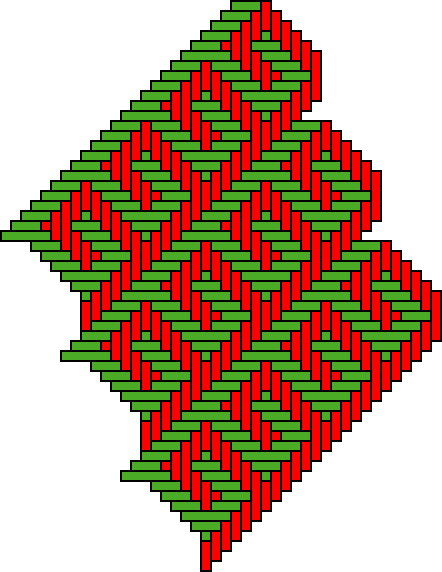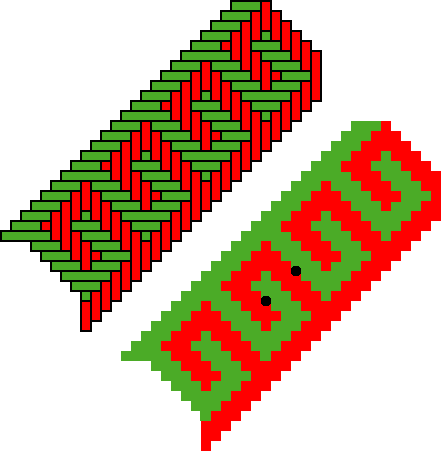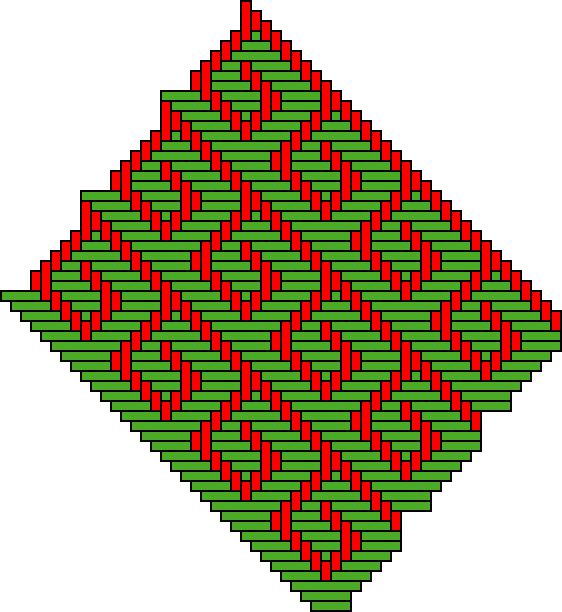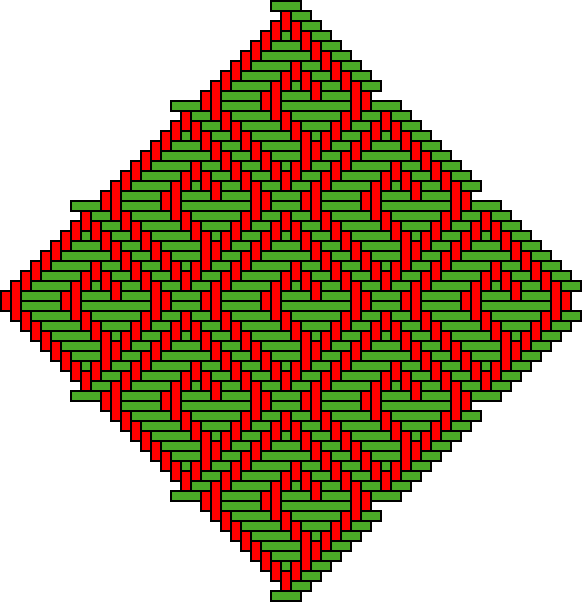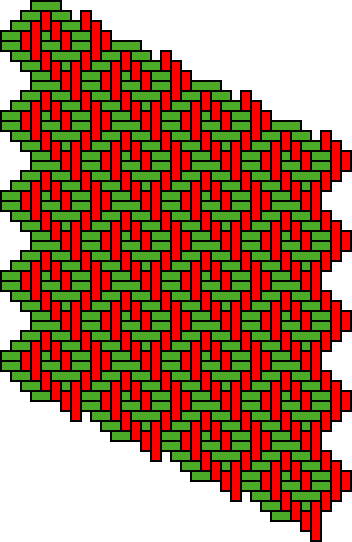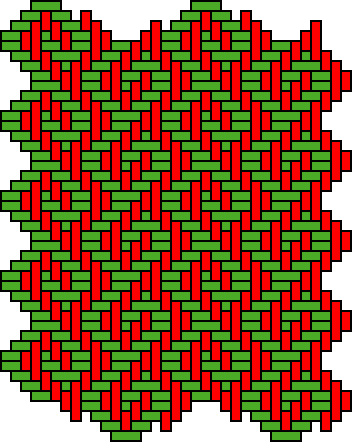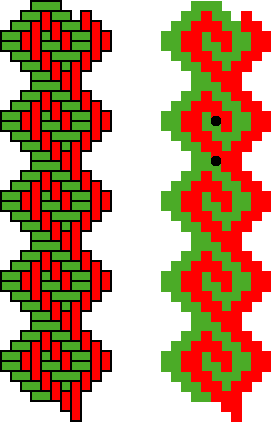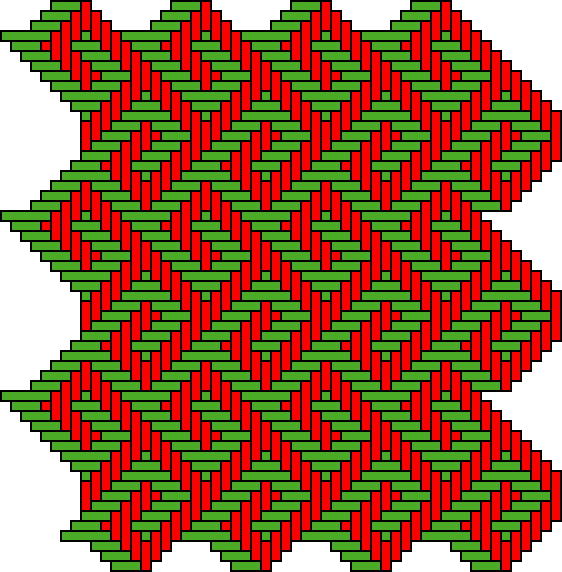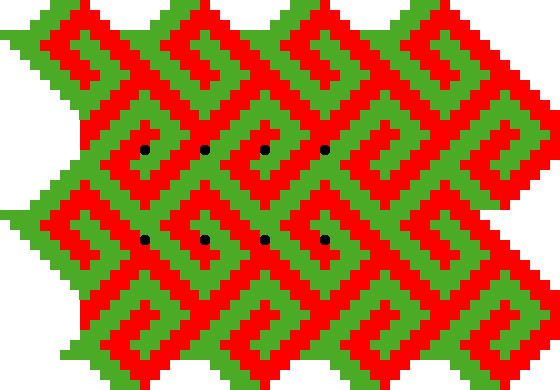|
Examples of twill plaited patterns with spirals from the Yombe (Congo) Paulus Gerdes Mozambican Ethnomathematics
Research Centre, C.P. 915,
Abstract At the end of the chapter “Spirals
interwoven in ipadge basket trays among the Makhuwa (Mozambique)”, two
examples of baskets from the Desana (Colombia, Brazil) and the Yekuana
(Venezuela) were presented where a series of interlocked plaited spirals.
In this chapter further examples will be presented, coming from the Yombe,
of twill plaited strip and plane patterns with series of spirals.
The Yombe are one of the Kongo ethnic groups who inhabit the area along the Lower Congo river, today located in the extreme west of the Democratic Republic of Congo [formerly Zaire] and neighbouring parts of Angola and the Republic of Congo. Elsewhere (Gerdes, 1999 [pp. 126-137], 2000, 2004), I analysed several aspects of finite designs, pattern formation and transformation, and of symmetries on mats made by Yombe women. A very interesting collection of Yombe mats, produced at the turn of the 19th and 20th centuries, is kept at the Royal Museum for Central Africa (RMCA, Tervuren, Belgium). Mantuba-Ngoma (1989, pp. 98-130) describes technical details of the Yombe mat production. The Yombe call their decorative motifs mabuinu (sing. dibuinu) (Mantuba-Ngoma, p. 179). They are introduced by variations in the twill and by addition of colored plaits. Colored black or red strips are woven perpendicularly to natural yellow-colored strips. The interweaving of the two colors symbolizes marriage. The colored strands are designated banuni, i.e., husbands, and the naturally colored strips are called bakazi, i.e., wives (Mantuba-Ngoma, p. 119). Figure 1 displays part of a plane pattern built up with strips of double spirals. The basic weave is 3/3, and the visual image of the strips has a two-colour symmetry (Figure 2). Figure 3 presents a similar plane pattern. This time, however, the dark and light coloured spirals are not symmetrical: the basic weave of the first is 2/2, whereas the basic weave of the second is 4/4. The spirals have three hooks, whereas in the first example the spirals have two hooks. Figure 4 presents another plane pattern, woven basically 2/2 and 4/4, where a ‘toothed square’ is repeated in both directions. The visual image of the woven strips in Figures 5 and 6 has a rotational, two-colour symmetry (see Figure 7). The basic weave is 2/2. In the first case (Figure 5) the parallel strips are in the same position, whereas in the second case (Figure 6) two neighbour parallel strips are reflected in a horizontal mirror. The visual image of the woven pattern
in Figure 8 has two-fold, two-colour symmetry and displays
also ’footstep’ symmetry that is the pattern is invariant under a horizontal
glide reflection (Figure 9).
Figure 1
Figure 2
Figure 3
Figure 4
Figure 5
Figure 6
Figure 7
Figure 8
Figure 9 References Gerdes, Paulus (2000), Gerade und Ungerade
- Zu einigen mathematischen Aspekten der Mattenflechterei der Yombe-Frauen
am unteren Kongo [Even and odd - On some Mathematical Aspects of Mat Making
by Yombe Women in the Lower Congo Area]
|
